- Author Jason Gerald [email protected].
- Public 2023-12-16 10:50.
- Last modified 2025-01-23 12:04.
Hyperventilation is medically defined as the act of excessive breathing, or inhaling and exhaling quickly and shallowly. Generally, panic attacks or anxiety will cause a person to hyperventilate. However, there are some additional and potentially serious medical problems that can also cause a person to hyperventilate. Hyperventilation can cause a number of disturbing effects on the body that can even increase feelings of panic or anxiety, leading to further hyperventilation. By learning more about the causes and symptoms of hyperventilation, you can help restore your natural breathing rhythm.
Step
Method 1 of 5: Understanding Hyperventilation
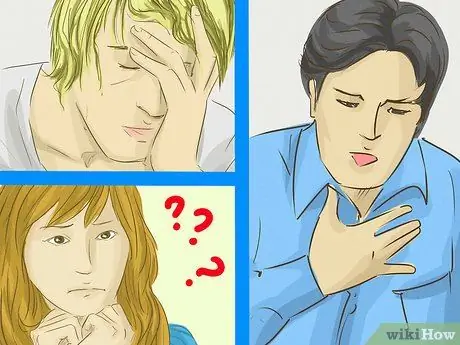
Step 1. Know the symptoms of hyperventilation
During hyperventilation, people often do not realize that they are breathing excessively. Because hyperventilation is usually caused by fear, anxiety, or panic, it may be difficult to pinpoint specific symptoms. Pay attention to the symptoms you experience during such situations to see if they are indicative of hyperventilation.
- Rapid or increased respiratory rate.
- Confusion, dizziness, and lightheadedness as if going to faint may occur during hyperventilation.
- Weakness, numbness or tingling in the arms or mouth, and muscle spasms in the hands and feet may also occur during hyperventilation.
- Palpitations and chest pain may also occur during hyperventilation.
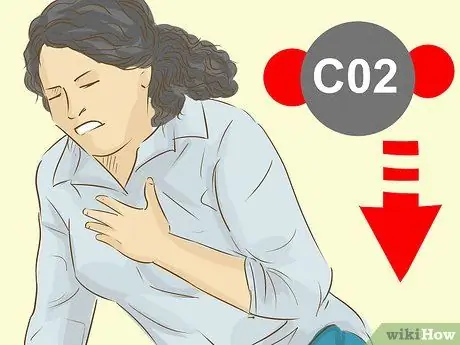
Step 2. Understand the causes
The main cause of hyperventilation is a state of panic or anxiety which increases the respiratory rate in the person. This excessive breathing causes low levels of carbon dioxide in the body. This change in carbon dioxide levels causes the characteristic symptoms that appear during hyperventilation.
- Hyperventilation can also occur if you breathe excessively on purpose.
- A number of medical problems, such as infection, lack of blood, or heart and lung disorders, can cause hyperventilation.
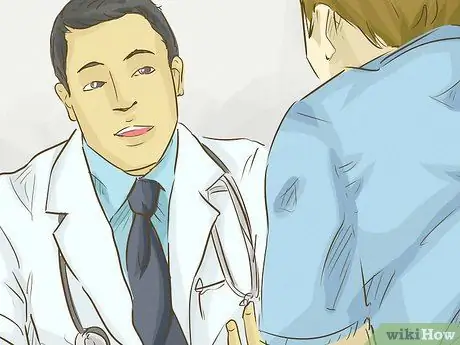
Step 3. Visit a doctor so you can understand better
So that you can know the symptoms of hyperventilation accurately and safely, talk to your doctor to learn more about it. Your doctor will be able to help you find the causes, triggers, and the best treatment plan according to how you feel.
- If hyperventilation is caused by anxiety or panic attacks, your doctor can directly help you deal with the problem.
- Hyperventilation can be an indication of another medical problem. Doctors can diagnose and provide treatment for these medical problems.
Method 2 of 5: Using Paper Bags
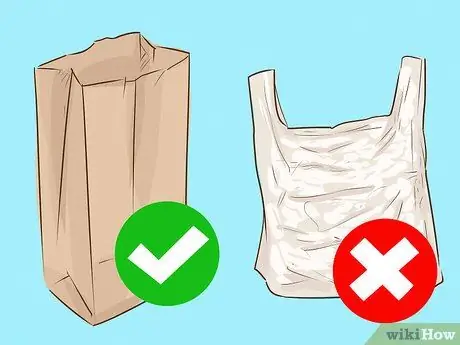
Step 1. Prepare a paper bag for use
Breathing into a paper bag can be a useful method when experiencing symptoms of hyperventilation. Breathing into a paper bag can help you reuse the carbon dioxide that would normally be lost after you exhale. Thus, proper carbon dioxide levels can be maintained and you can avoid symptoms of hyperventilation.
- Do not use plastic bags as they can pose a choking hazard.
- Make sure the paper bag is clean and that there are no small objects inside that can be accidentally inhaled.
- Make sure your doctor has explained about this technique, that this technique will be dangerous if used to treat hyperventilation caused by physical injury or disease.
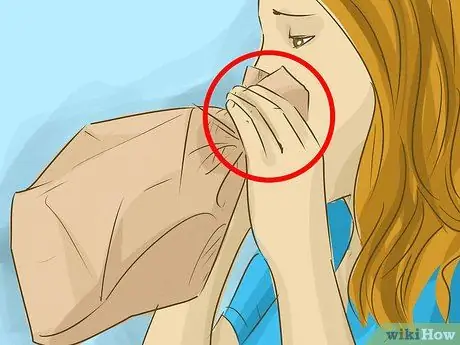
Step 2. Place the paper bag in front of your mouth and nose
To properly perform the paper bag breathing method while hyperventilating, you must ensure that the bag covers your mouth and nose properly. This is to ensure that the carbon dioxide is trapped in the paper bag, so that you can breathe it in again and reduce the effects of hyperventilation.
- Hold the bag with one hand at the mouth of the bag.
- Slightly pinch the bag to help shape the mouth of the bag, making it easier for the bag to cover the mouth and nose.
- Place the mouth of the bag directly over the mouth and nose as tightly as possible.

Step 3. Inhale and exhale into the bag
Once your mouth and nose are covered with the paper bag, you can start breathing normally inside the bag. Try to stay calm and breathe as normally and naturally as possible while hyperventilating.
- Breathe 6-12 times (no more) using a paper bag.
- Breathe as slowly and calmly as possible.
- After 6-12 breaths, remove the bag from your mouth and nose and breathe normally without using the bag.
Method 3 of 5: Retraining Breathing
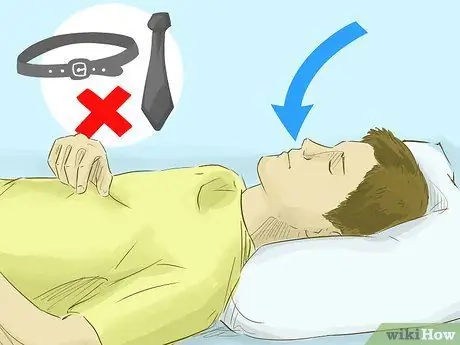
Step 1. Lie on your back and calm yourself down
To start an exercise that works to retrain breathing, you need to lie on your back comfortably and calm your body. Relax your whole body so you can fully focus on your breathing and get the most out of this breathing exercise.
- Remove tight or binding clothing such as belts or ties.
- You can place a pillow under your knees or back to make it more comfortable.
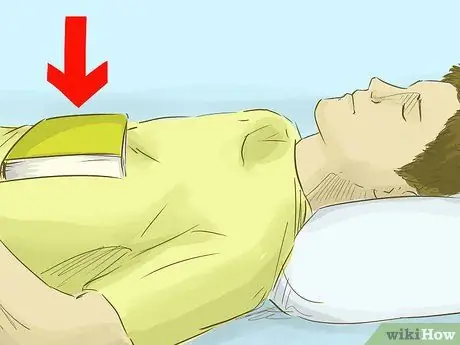
Step 2. Put something on your stomach
When hyperventilating, breathing is usually shallow, only chest level, and rapid. You need to practice your breathing to be more rhythmic and perfect using your stomach and diaphragm. By placing an object on your stomach, you will be able to stay focused on this area and provide resistance to strengthen the muscles that play a role in abdominal breathing.
- You can place objects (such as a phone book on your stomach) while doing breathing exercises.
- Do not use objects that are too heavy or have an unusual shape. Such objects can cause injury or make it difficult for you to balance on your stomach.
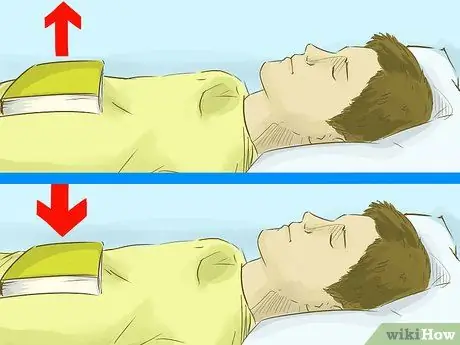
Step 3. Breathe using your belly
Once you are comfortably lying down and the right object is placed on your stomach, you can start doing breathing exercises. All you have to do is lift and lower the object using your belly inflated like a balloon. Keep the following in mind when practicing this new way of breathing:
- Breathe in through your nose while doing this exercise. If you can't breathe through your nose, you can purse your lips and breathe through your mouth.
- Breathe comfortably and rhythmically.
- Breathe smoothly and try not to leave a gap between inhaling and exhaling.
- Make sure only your stomach moves. Try to keep your whole body relaxed.
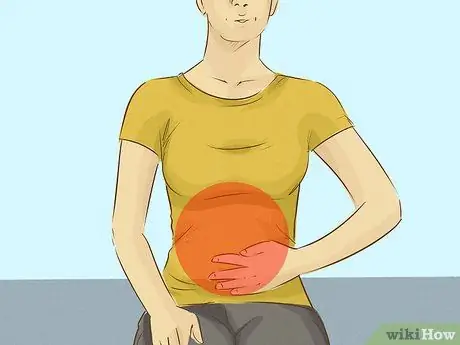
Step 4. Keep practicing
To get the most out of this exercise, you need to practice regularly. As you continue to practice, you will become more and more comfortable with this method of breathing, so you can avoid hyperventilating when you are under stress.
- Practice for at least 5-10 minutes a day.
- Slowly slow down your breathing rate during the training session.
- Start practicing this way of breathing while sitting or walking.
- Furthermore, you should use this method right before panic attacks or when experiencing stress.
Method 4 of 5: Getting Medication for Hyperventilation Due to Panic
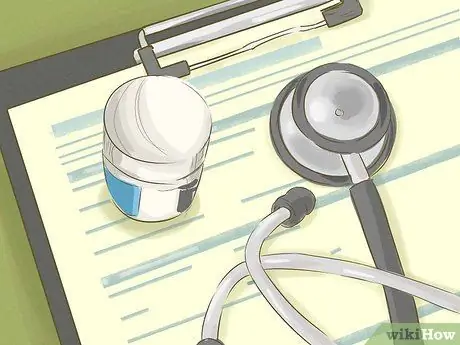
Step 1. Consider getting treatment
If your hyperventilation is caused by panic or anxiety, your doctor may prescribe medication to treat your anxiety. These drugs work to reduce the effects of anxiety and panic attacks, which in turn reduces the symptoms of hyperventilation. Talk to your doctor to learn more about the medications used to treat anxiety and panic attacks.
- SSRIs (Selective Serotonin Reuptake Inhibitors) are usually prescribed as antidepressants.
- Drugs belonging to the SNRI (Serotonin and Norepinephrine Reuptake Inhibitor) class are recognized by BPOM as antidepressant drugs.
- You need to know that drugs can take up to weeks before showing results.
- Benzodiazepines are usually given only for short-term use because they can become habit-forming over time.
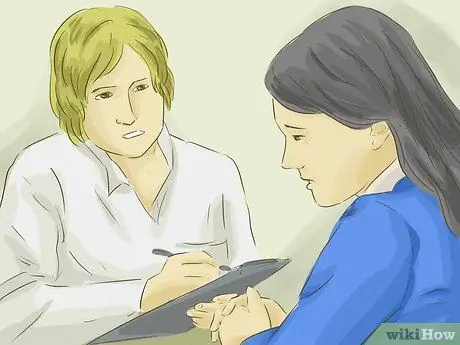
Step 2. Work with a psychotherapist
Hyperventilation caused by panic and anxiety disorders can sometimes be treated by a psychotherapist. A psychotherapist will work with you to identify and treat the psychological problems that cause panic or anxiety and the resulting hyperventilation symptoms.
- In most cases, a psychotherapist will use Cognitive Behavioral Therapy to help you deal with the physical sensations caused by panic or anxiety.
- Psychotherapy treatment will take time before showing results. Doing this treatment process for a few months will help ensure that your symptoms diminish or disappear completely.
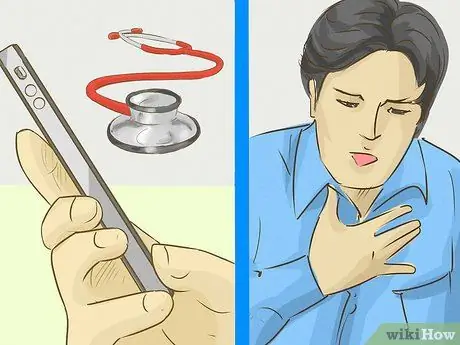
Step 3. Call your doctor in an emergency
Hyperventilation can indicate a serious health problem and there may be times when you should call your doctor or seek emergency services. If you notice any of the following aspects of hyperventilation, seek immediate medical attention:
- If it's your first time hyperventilating.
- If you are in pain and hyperventilating.
- If you have an injury or fever and hyperventilation.
- If your hyperventilation gets worse.
- If you are hyperventilating with other symptoms.
Method 5 of 5: Helping People Who Are Hyperventilating

Step 1. Watch for signs of hyperventilation
Before you can help someone who is hyperventilating, you must assess their condition. In general, the signs will be obvious; however, you have to be sure that he is actually hyperventilating to help himself.
- Hyperventilation is usually characterized by very rapid and shallow chest breathing.
- The person will generally appear to be in a state of panic.
- The person has difficulty speaking.
- You may notice muscle spasms in the person's hand.
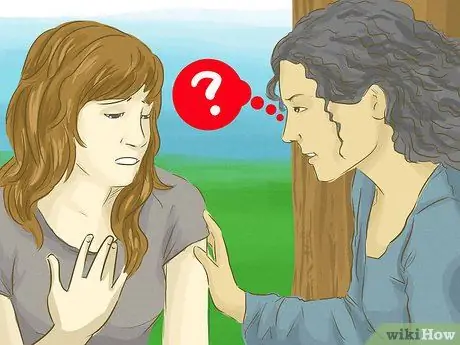
Step 2. Calm the person
If you think the person is hyperventilating, you can help them by reassuring them that they will be fine. Often hyperventilation can cause even greater panic if the person has a panic attack, causing the respiratory cycle to increase and symptoms to worsen. Calming them down can help reduce the person's panic and bring their breathing rate back to normal.
- Remind him that he is having a panic attack and that he is not experiencing something life-threatening, such as a heart attack.
- Keep your tone calm, relaxed, and gentle.
- Make sure that you are with him and will not leave him.
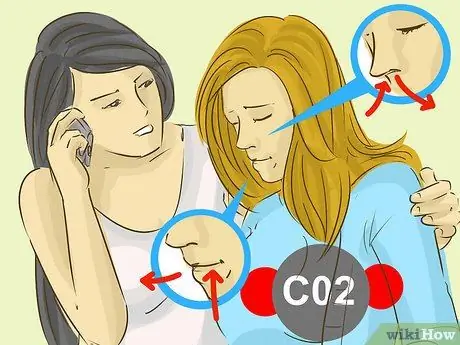
Step 3. Help the person to increase the level of carbon dioxide in his body
When hyperventilating, the level of carbon dioxide in the body is greatly reduced and can result in the symptoms usually associated with hyperventilation. To maintain carbon dioxide in the body, ask the person to breathe using the following method:
- Ask him to purse his lips, exhale and inhale through his mouth.
- He can also cover his mouth and one nostril. Ask him to breathe only through one open nostril.
- If the person looks very uncomfortable, is depressed, or complains of pain, call emergency services to be evaluated in the ER.
Tips
- Breathe using your belly instead of doing shallow chest breathing.
- Using paper bags to re-inhale the carbon dioxide that has been exhaled is thought to reduce the effects of hyperventilation.
- Ask your doctor for more information about your hyperventilation.
- Calmly reassure the hyperventilating person that he or she will be fine.
Warning
- Always consult a doctor to find out if the methods above are suitable for you.
- Deep, slow breathing is especially dangerous if your hyperventilation is due to metabolic acidosis, which only a doctor can diagnose.
Related WikiHow Articles
- Breathe In
- Breathe
- Calm Yourself When Panic






